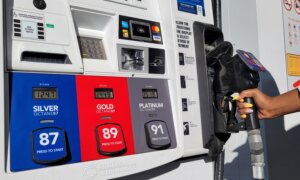What is the minimum down payment in Canada?
A big factor in Canadians’ ability to purchase a home is having the down payment—the amount of money a buyer pays up front when purchasing a property. This amount is taken off the purchase price of the home and is subsequently not included in the mortgage loan. So, the larger your down payment, the better—you’ll pay down your mortgage faster and pay less interest over time, and you’ll likely be able to purchase a more expensive house.
There is no limit to how much money you can put down on a property, but there are minimum down payments in Canada:
- When purchasing a home for $500,000 or less, the minimum down payment is 5% of the purchase price.
- If the home costs between $500,000 and $999,999, the minimum down payment is 5% of the first $500,000 of the purchase price plus 10% of the portion of the purchase price above $500,000.
- Homes that cost $1 million or more have a minimum down payment of 20%.
If you put down less than 20% on a property in Canada, you’re legally required to purchase mortgage loan insurance (also known as mortgage default insurance). The exception is for properties that cost $1 million or more—mortgage loan insurance isn’t available for homes in this price bracket.
How does an FHSA work?
A first home savings account (FHSA) is a registered account, introduced in April 2023 to help first-time home buyers save up for a down payment. The FHSA has contribution room of $8,000 per year, up to a lifetime maximum of $40,000, and the account can stay open for 15 years. Cash and investments held inside an FHSA grow tax-free, and there’s no tax on FHSA qualified withdrawals, either. Learn about Fidelity FHSAs.
What if you can’t make a 20% down payment?
Mortgage loan insurance can add thousands of dollars to the cost of home ownership—typically 0.6% to 4.5% of the mortgage, depending on the size of the down payment. Plus, if you decide to add the insurance premium to your mortgage rather than pay it up front, you’ll owe interest on it. So, if possible, it’s best to put down 20% and avoid the extra costs of insurance.
Here are some options to consider if you don’t have enough saved just yet:
- Save early or delay home buying for a bit so you have longer to increase your down payment amount (though prices may keep rising, as markets never stand still).
- Set a lower purchase budget in your target area (a condo or townhome instead of a detached house, for example), or look for a home in a more affordable area.
- Get financial help from your parents in the form of a gift or loan.
- Ask someone to co-sign the mortgage loan (more on this below).
- Use your registered retirement savings plan (RRSP) to take advantage of the Home Buyers’ Plan (HBP), which allows you to withdraw up to $35,000 ($70,000 per couple) to buy your first home and pay it back over 15 years.
- Make use of the Home Buyers’ Tax Credit
- Open a first home savings account (FHSA). This new registered and tax-sheltered investment product, which launched in 2023, is available from Fidelity and other providers.
Consider these options as tools in your belt—you can use one or several of these products and programs, depending on what you need. For example, you can use an FHSA in tandem with the Home Buyers’ Tax Credit and/or the HBP, as long as you meet the eligibility criteria for each one.
How co-signing a mortgage works
Qualifying for a mortgage loan can be even more challenging if you’re young, single or self-employed, even if you’re a diligent saver and use all the first-time home buyer tools and programs available to you. If you aren’t able to qualify for a mortgage on your own (or you aren’t able to qualify for a mortgage large enough to buy the type of home you want), you may be thinking about asking a parent or other family member to become your co-signer.
Co-signing is different from purchasing a house with a relative as a co-borrower—they do not co-own the home, but they are held responsible for mortgage loan payments if the owner (being you) ever defaults on them. A co-signer essentially lowers the risk to the lender by agreeing to cover your debt if you do not. A co-signer can also boost your buying power by helping you qualify for a larger mortgage loan than you would on your own.












